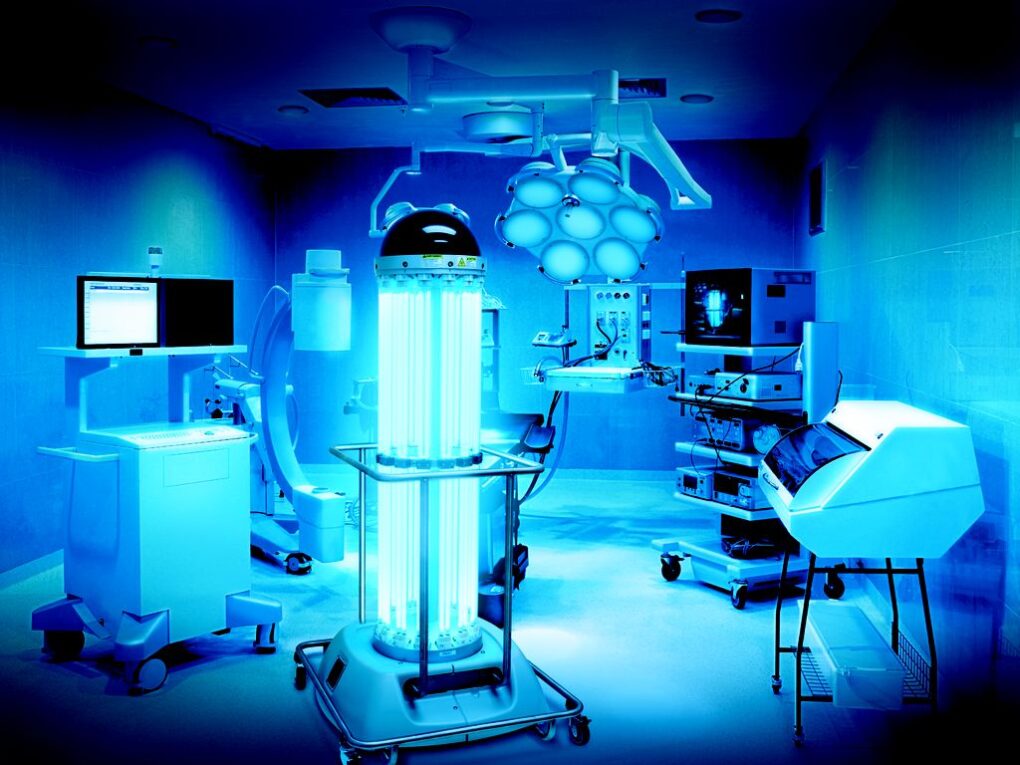The Rise of the Disinfectant Robot
Since the start of the COVID-19 pandemic, healthcare facilities and other high traffic areas have faced immense challenges in thoroughly disinfecting their spaces to curb the spread of the virus. A new technological innovation is aiming to help address this problem – the disinfectant robot. These autonomous robots are powered by UV light or disinfectant sprayers to efficiently sanitize entire rooms without human contact. As concerns around virus transmission remain, this novel approach shows great promise for enhancing hygienic protocols on a larger scale.
UV Light Technology
Many disinfectant robots currently on the market utilize ultraviolet (UV) light technology. UV light has been shown to effectively kill viruses and bacteria by destroying their genetic material. Robots equipped with UV lamps can systematically move through and sterilize an entire room in a matter of minutes. The main advantage of UV disinfection robots is that they do not require any chemical disinfectants, making the process safe, non-toxic and eco-friendly. The UV light penetrates shadowed areas that may be missed during manual cleaning. Additionally, these robots allow facilities to disinfect rooms more frequently without expending large amounts of staff time and labor.
One of the leaders in UV disinfectant robotics is Xenex Disinfection Services. Their LightStrike robot can reduce bacterial loads by 99.99% using pulsed xenon UV light in just five minutes per room. Over 350 of these robots have been deployed in healthcare settings worldwide. Studies show they can reduce infection rates of dangerous pathogens like C.diff, MRSA and VRE. The D-Strike360 from Diversey is another popular UV model that offers a 360 degree rotating lamp head for a more thorough disinfection process.
Spray Disinfectant Technology
While UV disinfection remains quite effective, some facilities may prefer utilizing chemical disinfectant sprays for an extra layer of assurance against viruses. Spray disinfectant robots carry tanks of hospital-grade cleaning agents to methodically mist targeted areas. The main models in this category are from companies like Xenex, Blue Ocean Robotics and UVD Robots.
The key benefits of spray Disinfection Robots include their abilities to reach tight, hard to access spaces like under beds, inside cabinets and equipment nooks. They can also coat irregular surfaces more uniformly than manual wiping alone. This ensures any pathogens lingering in microscopic crevices or protected areas receive sufficient exposure to killing concentrations of disinfectants. Spray robots can also track their coverage through sensors and GPS to ensure complete room saturation.
Multi-Purpose Cleaning Functions
As artificial intelligence and automation continue advancing, newer disinfectant robots are gaining enhanced multi-tasking abilities beyond just disinfection. Some models now double as autonomous cleaning and vacuuming robots between disinfection cycles to expedite the entire room turnover process.
For example, the newly introduced Xenex Flash Sterilization Robot offers both powerful UV disinfection and HEPA filter vacuuming in one mobile unit. It can deep clean an entire room 60% faster than traditional manual methods. Similarly, the newly launched BluEdge BXP-1 boasts mopping, vacuuming and UV sanitization functions controlled through an intuitive tablet.
Robots such as these streamline facility hygiene workflows by combining cleaning and disinfection into one automated solution. They eliminate the need for multiple specialist carts or separate worker teams, further reducing labor costs and risks of human error during multi-step room protocols. As multi-function bots proliferate, healthcare spaces may soon rely almost entirely on robotics to achieve sparkling, pathogen-free environments round-the-clock.
Wider Adoption and Future Advancements
While disinfection robots first gained traction in hospitals and eldercare settings, their usage profile is expanding to other high-contact venues like schools, offices, hotels, restaurants, places of worship and more. Their autonomous nature makes them especially suitable for continuously sanitizing large public areas that see heavy foot traffic. As the need for stringent hygiene standards remains heightened globally, disinfectant robots are poised for even broader implementation going forward.
Researchers also seek to heighten the capabilities of these robots through additional innovations. One area of focus involves developing enhanced pathogen detection sensors that can guide robots’ movements based on real-time contamination mapping of surfaces. This would optimize their coverage pathways. Natural language capabilities may also be integrated to allow voice-controlled disinfection on demand from any room. Looking ahead, disinfectant robots offer an invaluable automated solution for institutions seeking permanent safeguards against infectious disease outbreaks in the evolving public health landscape.
The rise of disinfectant robots presents a promising technological solution for systematically and efficiently combating the spread of viruses through rigorous hygienic protocols. As robots proliferate healthcare and begin penetrating broader spaces, they normalize heightened cleaning standards while easing the manual labor burdens on staff. Whether powered by UV light or chemical sprays, these autonomous machines demonstrably bolster facility-wide sterilization in a consistent, eco-friendly manner. Their multi-purpose attributes also streamline entire room turnover workflows. As robotic innovation further refines disinfection methods, these machines will likely become relied upon guardians for public health security worldwide.
*Note:
1. Source: Coherent Market Insights, Public sources, Desk research
2. We have leveraged AI tools to mine information and compile it

